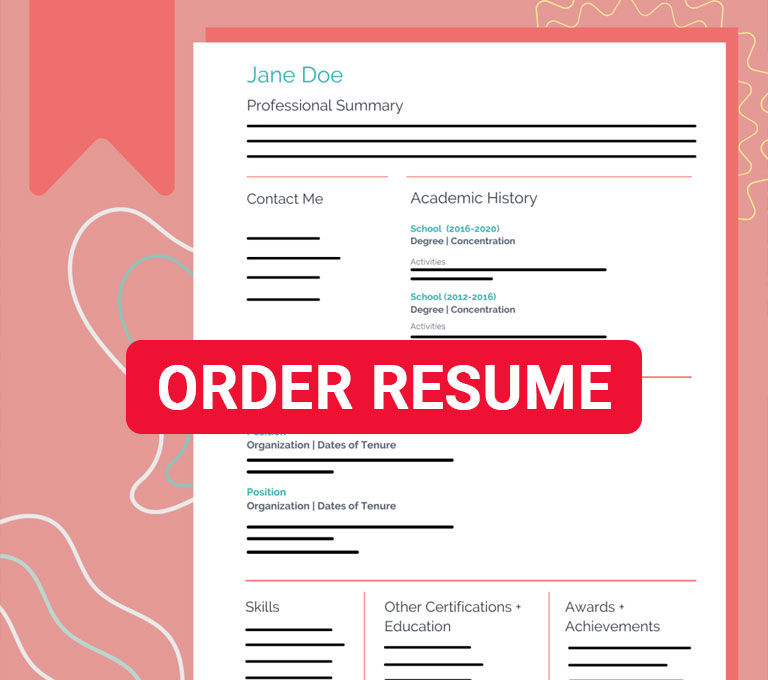Courses in the curriculum
Mediating between the need to enter as much information as possible about your CV and the need not submit a document that is too long and redundant is the most difficult thing when preparing a curriculum vitae. Some data can be omitted, but most must always be entered. Among the data that cannot be missing, there are those relating to one’s education, one’s work experiences and also the various training courses in which one has taken part. In this guide we will explain how and why to insert the courses on the curriculum vitae in a clear and concise way.
Training courses and refresher courses: the differences

The courses training courses can be attended by different types of “students”: you can decide to attend a course instead of going to university, you can choose to specialize in a certain field after having obtained a degree or diploma, you can choose to change subject despite having attended a certain degree course.
For example, a professor of foreign literature might decide, at some point in her career, to change the path and follow a training course to become a nursery educator.
Or again, just out of high school a girl might decide not to attend university but to enroll in a training course to become an expert in nail reconstruction.
Refresher courses are generally linked to one’s profession and are the method to keep up-to-date on the evolution of the profession and also to specialize in that specific area.
A striking example is that of doctors who can periodically follow refresher courses to be informed about the latest news in the medico field, in relation to their specialization.
In both cases, the courses are fundamental for one’s professional growth and can be an advantage in the field of job search.
Because training and refresher courses are essential for the job search
At a particularly difficult time in terms of job hunting, being able to demonstrate that you have even a minimal advantage over other candidates is essential.
Training and practice courses in the field
With the same experience and education, a candidate will always have an advantage over another if his CV shows the attendance of specific courses, relevant to the job position for which he is applying .
Let’s take an example:
Job position as a nurse in a private clinic.
- Candidate 1 specifies on his CV that he has obtained a regular diploma as a nurse, and that he has worked for 5 years in a clinic;
- Candidate 2 specifies on the CV that he has obtained a regular diploma as a nurse, that he has worked for 3 years in a clinic and in the meantime has attended a specific training course in “neonatal nursing”;
- Candidate 3 specifies on his CV that he has obtained a regular diploma as a nurse, that he has worked for 3 years in a clinic and in the meantime has attended various specific training courses, obtaining professional certificates in various areas.
Who will be the chosen candidate or in any case favored, at a first screening?
Refresher and work courses
With the same experience and education, reporting the frequency of refresher courses on the CV can represent a competitive advantage in the job search phase. This is because in this way you are shown to be flexible and willing to continue learning and, above all, to be informed about the latest news related to your work.
Let’s take an example:
A lawyer who has never attended refresher courses on his subject is not at the forefront and for this reason its impact could be zero or lower than a candidate who is always informed.
When courses can be an obstacle to your career
It is not always true that attending training or refresher courses and including them on your CV is always good. For example, let’s say that your CV has holes and that those holes have been filled by attending various courses, you must be careful not to enter information on courses that are not pertinent to the rest of your education and experience.
A chef with a gap of 1 year in the CV due to reasons not specified on the CV itself and training courses in areas completely different from that of belonging, will hardly be able to pass the very first selection based on the CV.
An electrician with a gap of 1 year in the CV due to reasons not specified on the CV itself and training courses in areas completely orbiting that of belonging, will be able to pass the very first selection based on the CV only if the CV follows a logical thread and the right sequence and the attendance of various types of courses is functional to an improvement of own career.
The rules for adding courses in the CV
As with other curricular items such as education and career, even when inserting courses on the CV you must follow unwritten but indispensable rules:
- Insert only and only courses relevant to the career;
- Where the courses are completely different from the rest of your experiences, make sure to create a logical thread in the CV that implicitly explains the reason for the various choices;
- Insert only recent courses, unless a very old course was not particularly useful to get to the point we have reached today at a working level;
- Enter any certifications obtained and also the organization that issued the certificate;
- If the courses attended included an exam with a final grade, reporting the final grade is not essential unless this is strictly necessary for understanding the certificate.
How to enter training and refresher courses using CVwizard.it
You can enter all the courses you have attended or are still attending quickly using CVwizard.it which allows you to do it in 3 different ways.
Mode 1
Add a new Section in Contents and, from the drop-down menu, click on Courses. Enter the name of the Course, the Period during which it was attended and specify if it was completed or is still in progress. To provide more information on each individual course, click on the three dots in the appropriate box. To add other Courses, click on Add Other Courses and follow the same procedure described here.
Mode 2
You can enter the courses in the training section in case you have attended a few courses and / or you think it makes no sense to create a separate section on the CV. Go to Contents then in Education and Training enter Training, Institute and City, Start Date and End Date. To provide more information on each individual item, click on the three dots in the appropriate box. To add more courses click on Add Education and Training and follow the same procedure described here.
Mode 3
If you have attended training or refresher courses in work environment, you can add them in the Work Experience section located under the heading Contents; add the title of the course under Location and indicate at least the start and end dates and a small description. Repeat the same operation for all the courses you have attended.

Summarizing
- Training and refresher courses can be an advantage in the job search phase;
- Courses not relevant to your career should be inserted after careful reasoning;
- In the case of job gaps and refresher and training courses it is good to evaluate whether and what information to specify;
- The courses must be entered in chronological order, from the last to the first.


